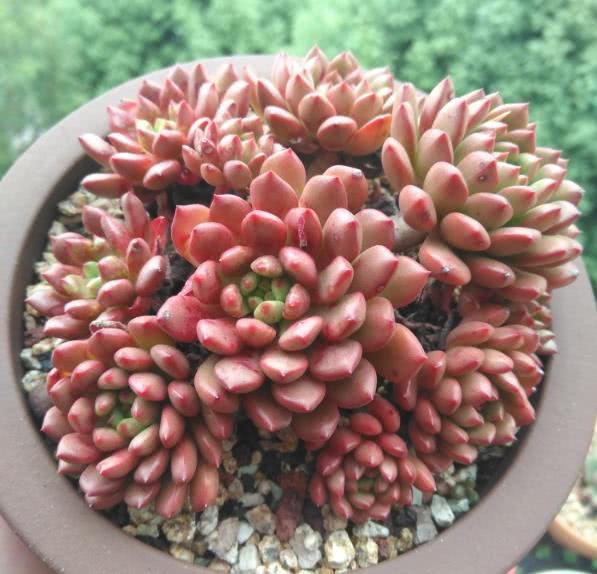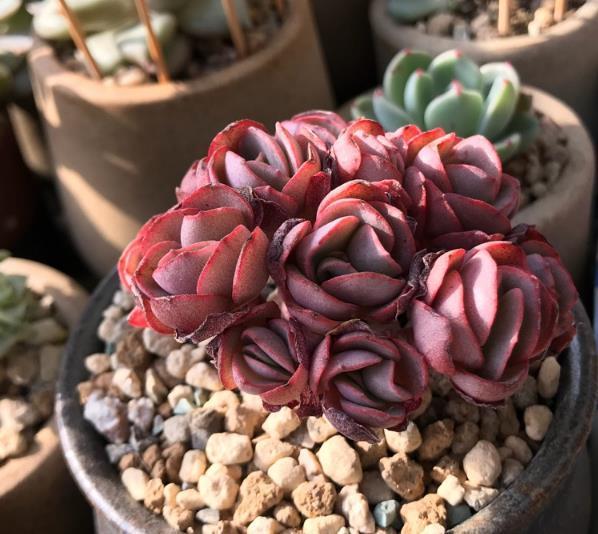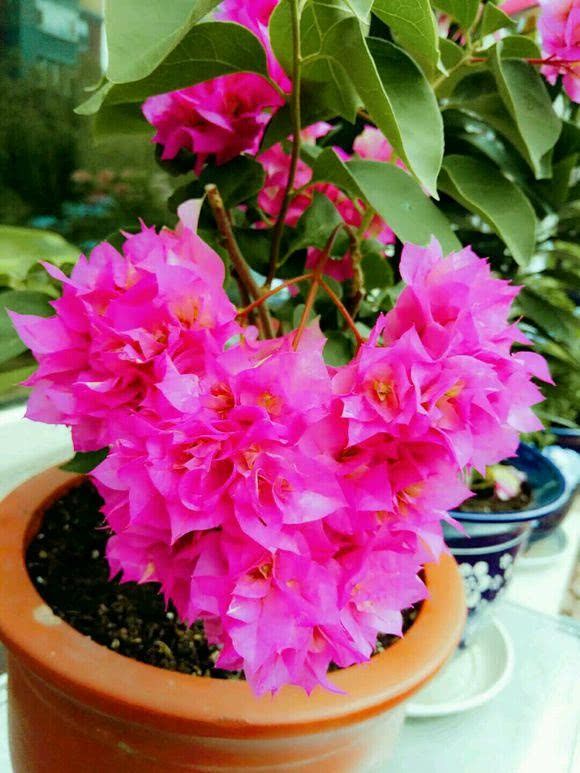Does the black rot root of succulent plants have something to do with the soil? Do a good job of maintenance at ordinary times

When pests are rampant in the soil, the roots may also be completely destroyed, which can lead to the decay of succulent plants over time. Excessive fertilization or mixed with immature organic matter will cause "root burning" after application, which will also lead to plant rot. The continuous excessive dampness and waterlogging of the basin soil often lead to anoxia and asphyxiation in the roots, so that the roots are quickly destroyed. if the light is too strong, the ventilation is not smooth, and the environmental temperature is too high, succulent plants may rot soon.
Prevention and treatment of rot should give priority to prevention. The cultivated soil should not be mixed with rotten organic fertilizer, and the fertilizer should be light rather than thick. When you find that the basin soil is waterlogged, you should immediately buckle the basin, wash the root system and blow dry; if the root system does not change color, the root hair of the whisker root is still intact, and you can put it in the basin for observation for a period of time; part of the bad root system can be cut off, and the wound can be dried before planting; all the bad root system should be cut off, and the new root can be cut after drying the wound. Improving the environmental conditions of the cultivation site, especially the formed plants cultivated from the roots, requires a clean environment, good ventilation, sufficient light and moderate temperature, so that the occurrence and spread of pathogens can be greatly reduced.
To some extent, succulent rotten roots are caused by too much watering or too much fertilization. Of course, there are many reasons for succulent rotten roots, and the singleness of the soil will also cause rot. if the soil is breathable, then the excess water will flow down and will not cause flooding, especially in the rainy summer season. If the water is too much, to a certain extent, it will cause the plant roots to lose oxygen and lead to succulent rotten roots, and there is poor ventilation after watering, which is also the reason for succulent rotten roots. Plants can often be loosened and breathed in summer, which will be better for preventing succulent roots.
For the newly potted succulent plants, do not rush to water after they have roots, and the soil should remain permeable. In addition, watering should be carried out according to its growth state. No matter the type of dormancy in winter or summer, stop watering the basin during the dormancy period. Specific succulent how to water, meat friends can refer to the blog succulent watering method detailed steps to learn. During reproduction, man-made wounds, wounds caused by insect bites, the epidermis of seedlings, and the lower part of the formed plant stem are usually "shortcuts" for germs to invade the plant. When environmental conditions are conducive to the proliferation of bacteria, plants, especially seedlings, often die quickly in batches.
If the root rot of succulent plants is relatively slight, first of all, the first thing to do is to quickly control the water and blow, stand the flowerpot on the bottom of the well-ventilated flower rack to let the excess water flow out, and use an electric fan to enhance the flow of air for 24 hours. If the weather is bad and the air humidity is too high, friends who have heaters at home can use heaters with electric fans. However, when using a radiator, remember that at least a distance of more than 3 meters cannot be used directly to the plant. The fan can blow directly to the plant. It should also be noted that the heater should be turned on and off for intermittent use, otherwise the rapid loss of plant moisture will become a specimen.
Be sure to keep the utensils clean and sterile when handling rotten plants and wash your hands carefully before touching other plants. Cut off the infected part with a sharp knife, then insert crushed charcoal and sulfur into the wound. The wound should be completely dry. Most succulent plants grow in desert climates and adapt to extremely dry conditions, so watering should not be overdone, and the soil should be left dry between watering. Another reason for decay is that the soil medium is impermeable, especially for radish. Be sure to use a drainage medium to ensure that the water deposits in the stem for no more than a few minutes (the medium I use is usually completely watered as soon as the water is poured down).
Here is a gathering place for succulent plant lovers, sharing succulent maintenance skills, welcome to follow and exchange.
- Prev

How to save the black rot of succulent plants that have been drenched in the rain for several days?
Rain Water also has a lot of courage to drench succulent plants for a few days in summer. with high temperature but humidity in summer, succulent plants themselves have to be preserved with less water, even if they are exposed to succulent plants to avoid seeing such Rain Water. Black rot is to be expected.
- Next

Triangular plum branches and leaves grow? To do a good job at these three points, the flower buds rub together and the flowers bloom more than the leaves.
Triangular plum is a popular flower plant, it blossoms brightly, blossoms can be full of pots, very ornamental value, so many flower friends like to raise a pot of triangular plum at home. But the maintenance triangle plum often appears one.
Related
- Wuhan Hospital Iron Tree Blooming Result Was Instantly Frightened by the Gardener Master
- Which variety of camellia is the most fragrant and best? Which one do you like best?
- What is the small blue coat, the breeding methods and matters needing attention of the succulent plant
- Dormancy time and maintenance management of succulent plants during dormancy
- Minas succulent how to raise, Minas succulent plant pictures
- What are the varieties of winter succulent plants
- How to raise succulent plants in twelve rolls? let's take a look at some experience of breeding twelve rolls.
- Attention should be paid to water control for succulent plants during dormant period (winter and summer)
- Watering experience of twelve rolls of succulent plants
- Techniques for fertilizing succulent plants. An article will let you know how to fertilize succulent plants.

